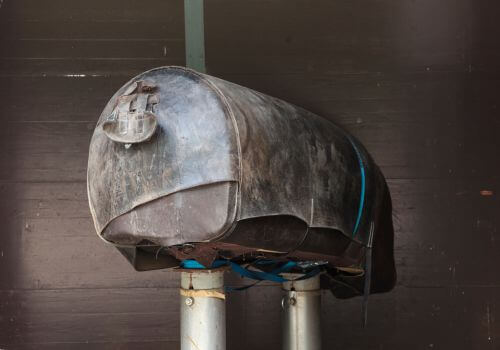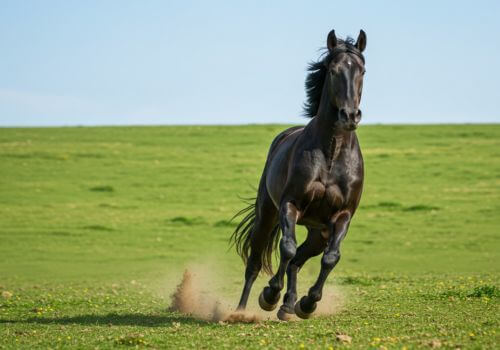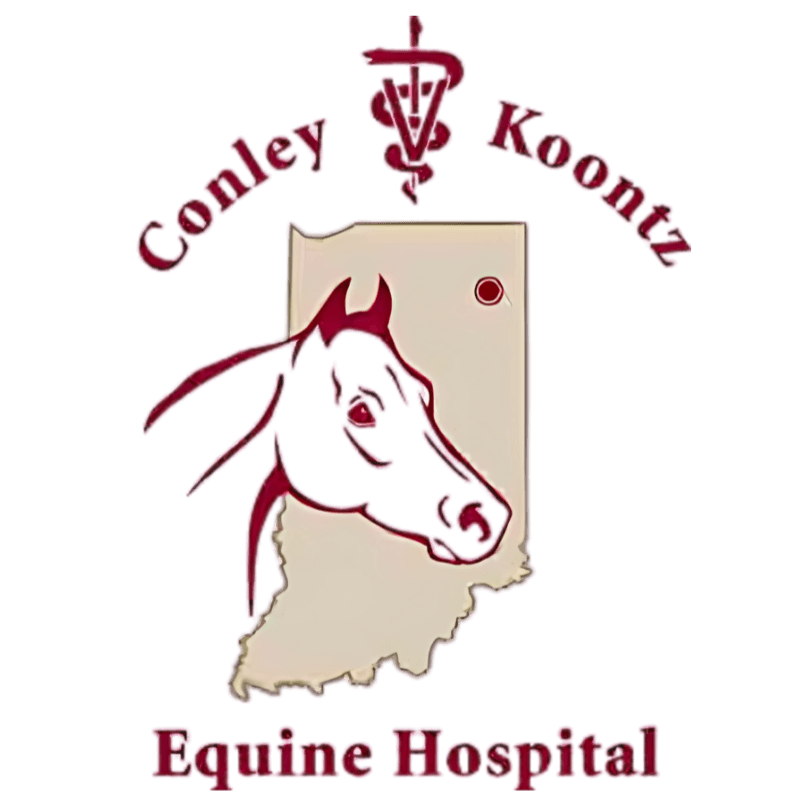Over the years, artificial insemination (AI) in horses has become an increasingly popular option for equine breeding, and for good reason. Artificial insemination allows owners to avoid the risks and hassles of live cover to expand their herds, while prioritizing genetic quality and effectiveness. Whether your goal is to preserve valuable bloodlines, minimize the risks of physical injury, or reduce the logistical challenges of breeding, AI can be tailored to meet your needs.
In this blog, we’ll discuss how artificial insemination works, the benefits of it, and the role your veterinarian plays in a safe and successful breeding.
What Is Artificial Insemination in Horses?
At its core, artificial insemination for horses involves the insemination of a mare by a veterinarian after semen has been collected from a stallion and preserved. Depending on the health and viability of the mare, as well as the quality of the semen used, there are a few different horse AI techniques a veterinarian may employ, including:
- Traditional Artificial Insemination: In this commonly used horse AI technique, semen is placed directly into the mare’s uterus using a long pipette passed through the cervix. It is suitable for most mares and works with fresh, cooled, or frozen semen, making it an accessible option to achieve many owner’s breeding goals.
- Deep Horn Insemination: Here, semen is deposited into the uterine horn closest to the ovulating follicle, helping more sperm reach the oviduct. It is often used for frozen semen or when semen volume/quality is low, as it can improve success rates compared to standard placement.
- Hysteroscopic Insemination: In this specialized insemination technique, a camera is used to guide semen directly to the uterotubal junction (where the uterus meets the oviduct). This method is typically reserved for very small or low-quality semen doses, such as from rare or high-demand stallions. It also requires precise timing near ovulation for best results.
The Benefits of Artificially Inseminating a Mare
Artificial insemination for horse breeding is often considered safer and more likely to be effective than live cover for a number of reasons. First, because no direct contact is made between the mare and stallion, there is a lower risk of physical injuries and transmission of disease during the breeding process. It is not uncommon for both stallions and mares to sustain injuries when live-cover practices are used; kicks, bites, and other injuries from improper mounting or positioning – and even aggression – can all result from the natural mating process. Artificial insemination helps lessen the risk of either horse sustaining breeding injuries by removing the need for them to make physical contact.
Due to the lack of proximity needed for breeding, artificial insemination for horses also lowers the risk of either horse contracting an infectious disease. Contagious Equine Metritis (CEM), Equine Viral Arteritis (EVA), and bacterial infections can potentially be spread when mares and stallions naturally mate, and this risk is greatly lessened when artificial insemination is used instead.
In addition to the health and safety benefits AI has for horses, it can also lessen the logistical burdens that many owners face when breeding their horses. Since neither horse needs to be in the same place in order to breed, owners don’t need to arrange for transportation for the mare or stallion, which can be costly for owners as well as stressful and dangerous for the horses. This also allows for greater access to genetic diversity, as mares can be bred with healthy stallions from across the country, improving the overall genetic health of a herd, without incurring travel costs.
Understanding the Timeline for AI in Horses
The overall timeline for artificial insemination of a mare will depend on where the owner wants to start the process. At Conley & Koontz Equine Hospital, we’ve had owners come to us with a mare and semen ready to start the artificial insemination and breeding process the same day, while others will want to begin with ultrasound tracking and planning of the estrus cycle to allow for precise breeding with either fresh or frozen semen. We can work with you to create a plan that best suits your needs as an owner and prioritizes the safety and effectiveness of breeding for your mare.
Once the breeding protocol begins, we typically allow about 10 days for the ovary to develop a dominant follicle. At that point, a medication is given to remove any ovarian structures that could delay the heat cycle. Around five days later, we perform an ultrasound to check for the presence of a dominant follicle and plan breeding for the following day. We then confirm ovulation the next day to ensure the timing was successful.
Collecting & Preserving Equine Semen for Horse Artificial Insemination Use

A breeding facility or stud farm can collect stallions for either fresh or frozen semen, depending on the mare owner’s needs and timing. Fresh semen is often shipped overnight for next-day insemination, but in time-sensitive cases, it can be sent “counter to counter” via the airport for same-day delivery. Frozen semen requires more specialized handling but offers the greatest flexibility, as it can be collected at any time and stored indefinitely until needed.
Once collected, semen is evaluated for quality, including sperm count, motility, and shape and structure. Based on the intended use, the semen may be:
- Spun down and concentrated for low-dose deep horn insemination, which is helpful when sperm numbers are limited.
- Extended with a nutrient-rich solution to protect and sustain the sperm during shipping for standard AI use.
For cooled shipments, semen is stored in a temperature-controlled container to maintain viability during transit. For long-term storage, semen is cryopreserved in liquid nitrogen, which can keep it viable indefinitely.
Freezing semen not only allows for flexible breeding schedules but also extends a stallion’s breeding career well beyond his active years. This means a stallion’s genetics can continue contributing to breeding programs even after he is retired or has passed away.
Cooled vs. Frozen Semen for AI in Horses
Both cooled and frozen semen can be used to artificially inseminate a mare, with each type of semen storage having its own advantages, disadvantages, and special considerations. Typically, cooled vs. frozen semen boils down to the available breeding window with mares. With cooled semen, we want to breed around 12 to 24 hours before ovulation. Frozen semen, on the other hand, must be used for insemination within 6 hours of ovulation.

With good quality semen in good mare conditions, conception rates can be 40-65%. For fresh semen, some report conception rates as good as 90%. While frozen is 30-50% with some as high as 70% depending on semen quality. Cooled semen can have better conception rates and requires less management, which in turn can be more cost-effective per breeding. When breeding frozen semen, it is important to know how many doses are available and what their quality is in order to understand the true likelihood of conception.
Are There Risks or Complications Associated With AI in Horses?
As with any procedure, there are always risks. While we take steps to prevent them, there is always a potential for rectal tear or other complications like pyometra, which is an infection in the uterus.
The safety and well-being of the horses we work with is always our top priority, and the artificial insemination processes we follow at Conley & Koontz Equine Hospital have been developed and fine-tuned with that in mind.
Work Closely With Your Vet for the Best Horse AI Outcomes
Artificial insemination in horses is a precise process that requires careful timing, specialized equipment, and a thorough understanding of equine reproduction. The experience and skill of your veterinary team play a critical role in both the safety of your horse and the effectiveness of the breeding.
Every step in the breeding process should be carefully planned and monitored. From monitoring your mare’s cycle to handling and preserving semen correctly, every step is crucial to ensure the health and safety of both the mare and developing foal. By partnering with a veterinary team experienced in equine reproduction, you can feel confident that your breeding program is managed with the highest level of care, increasing the likelihood of a healthy pregnancy and a successful foaling season.
If you have questions and you'd like to reach out to us, you can call us directly at (877) 499-9909, or you can email us at [email protected].
